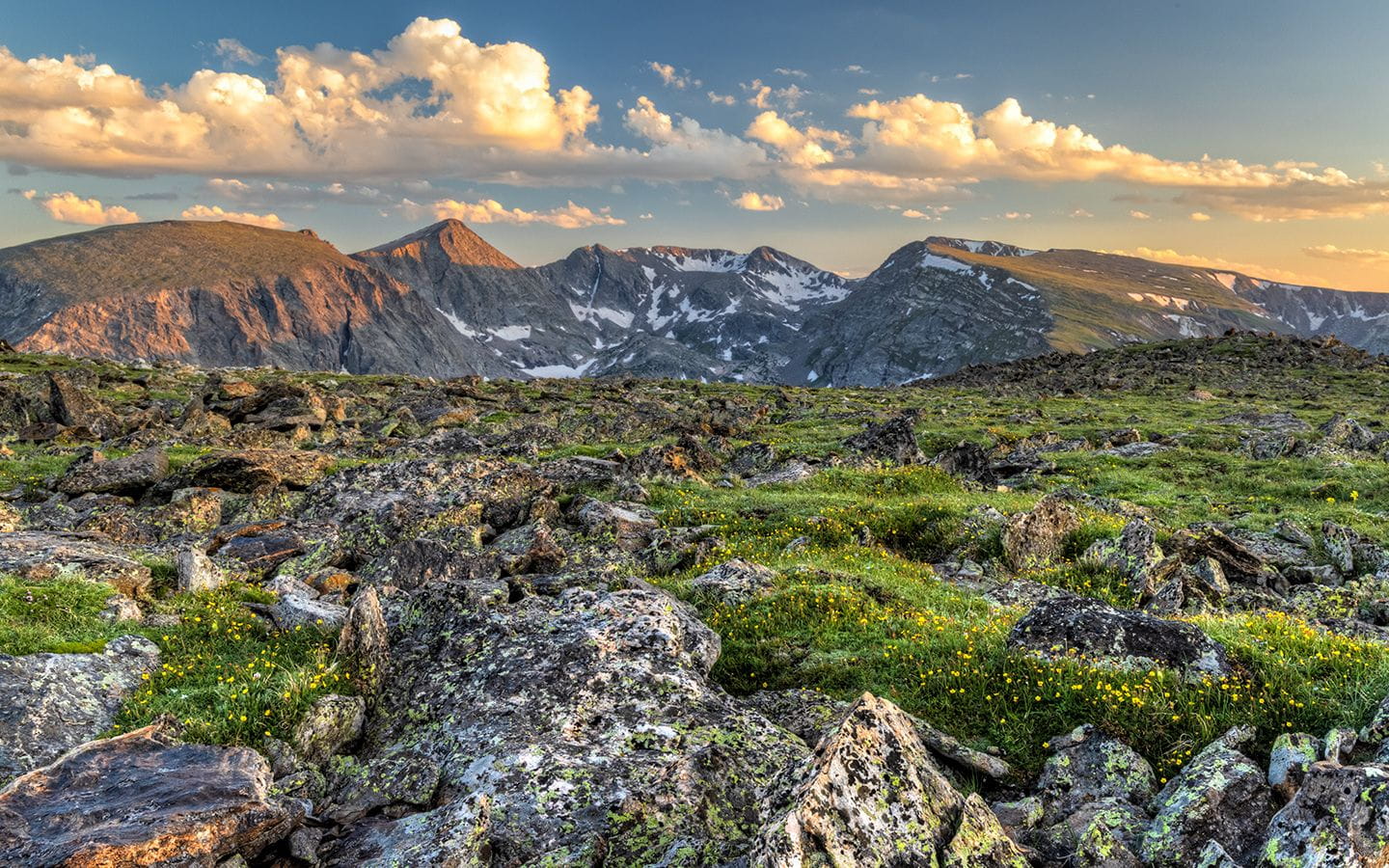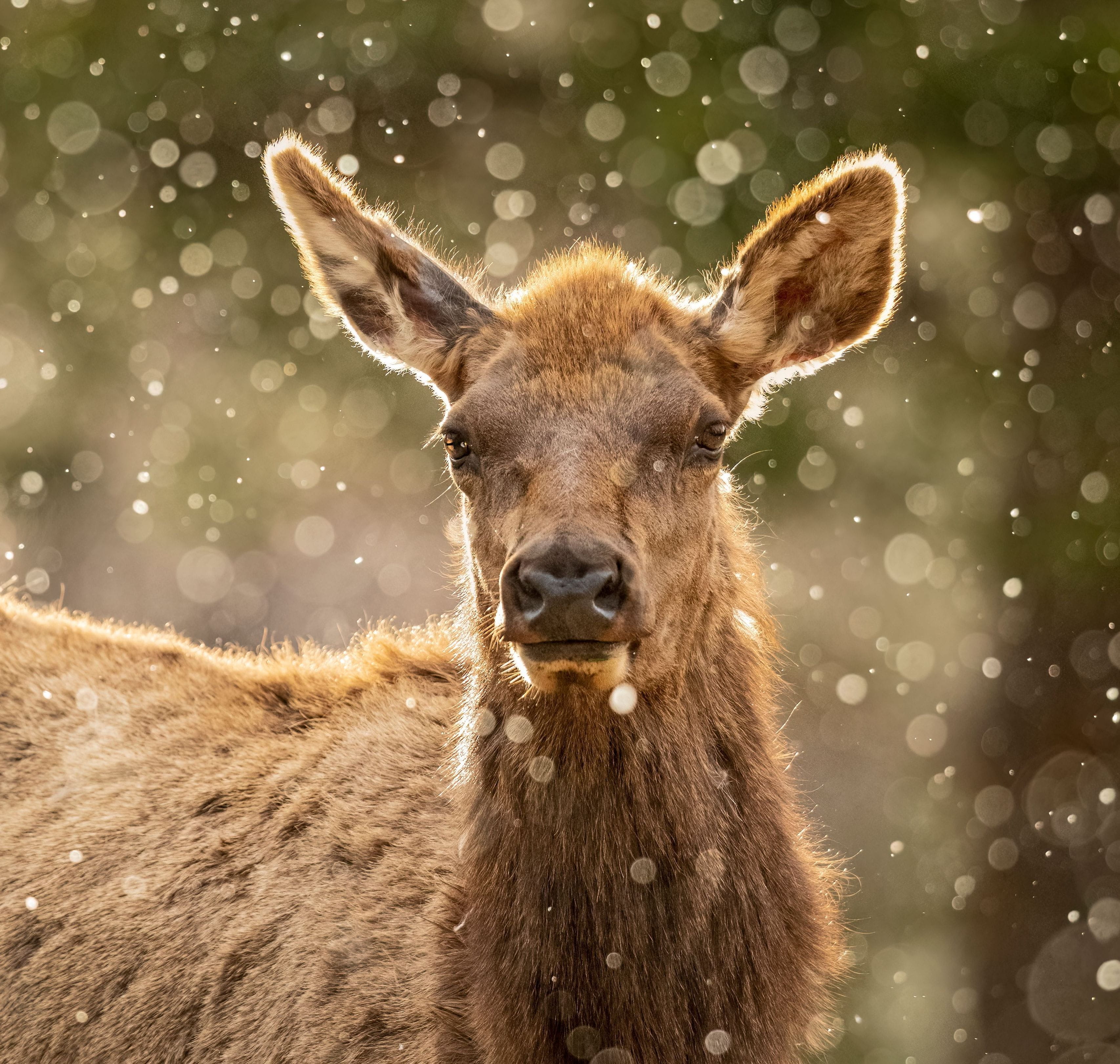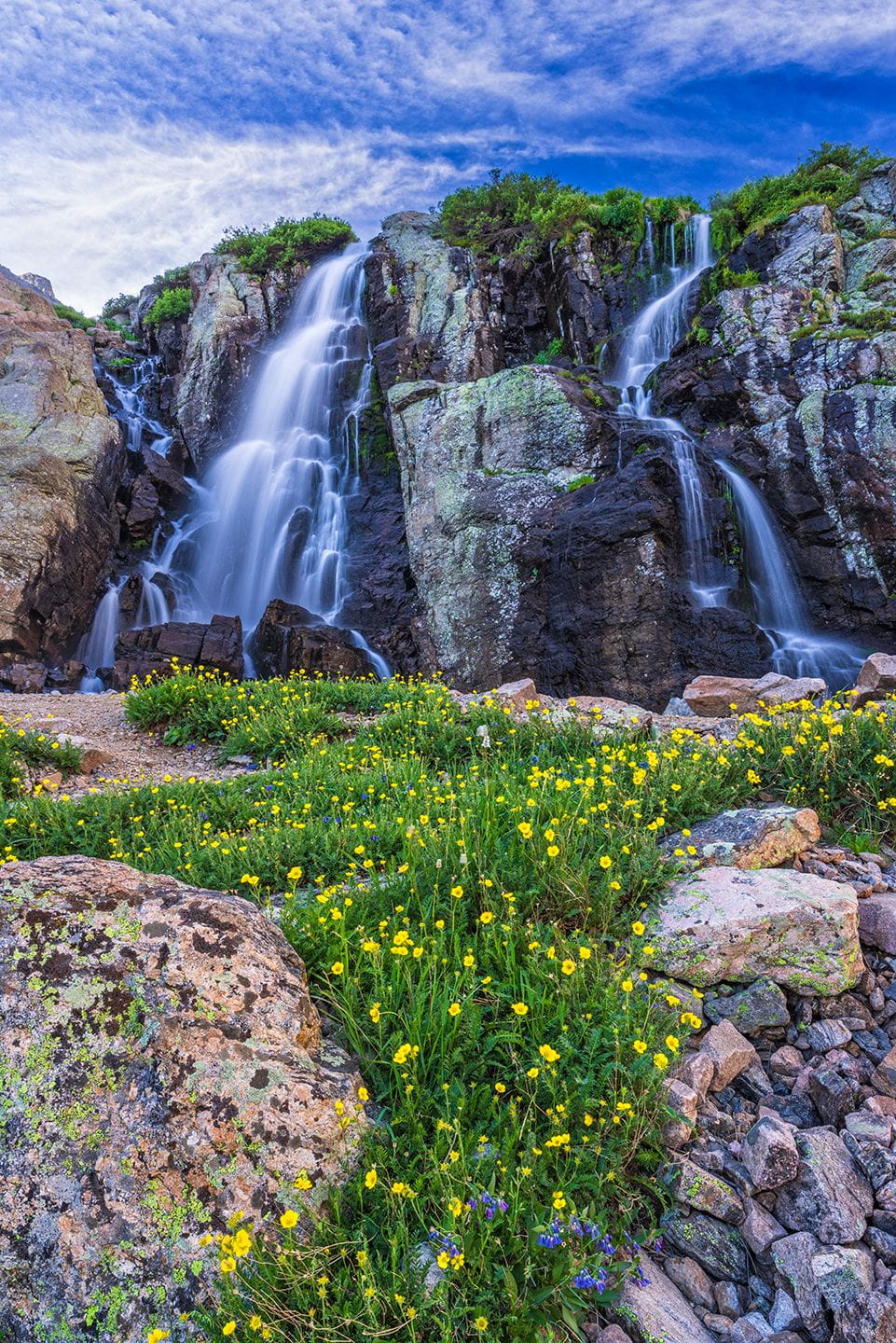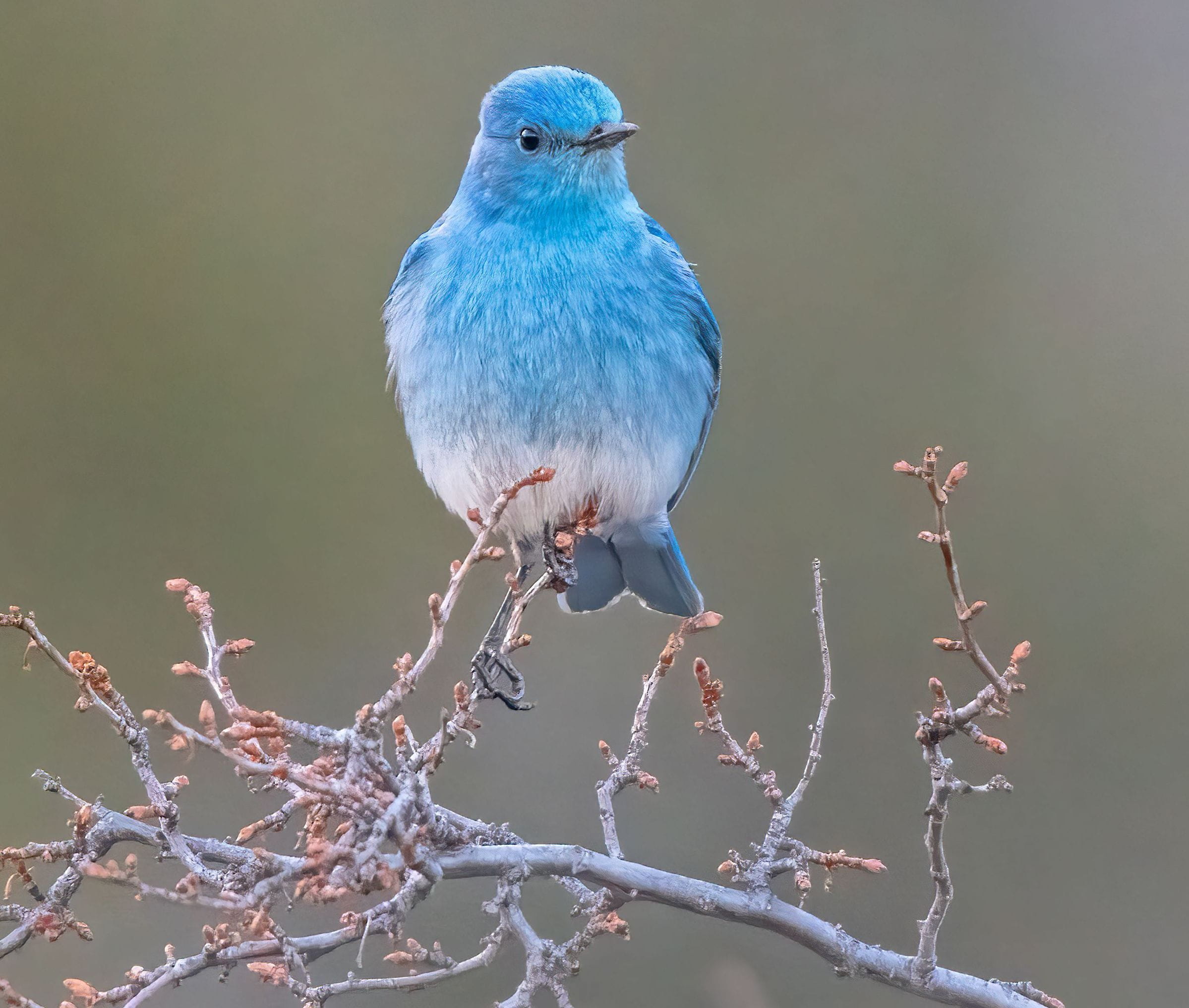High Altitude Hints
Rocky Mountain High

Coloradoans are pretty proud of the elevation in their state, so most towns in Colorado have welcome signs that list the elevation instead of the population. Estes Park is at 7,522ft and Denver (The Mile High City) is at 5,280ft. In fact, Colorado has the highest mean altitude in the U.S. of 6,800ft.
Traveling in Nature
Elevations in Colorado range from 3,385ft above sea level on the Eastern Plains to more than 14,440ft at the top of Mt. Elbert in the Rockies. Generally, high altitude is anything more than 3,500ft above sea level.
A high-altitude environment is marked by decreased humidity and less atmospheric pressure (up to 40 percent less dense), which gives the impression of a lack of air to breathe.
Get Used To It
It takes the body time to acclimate to the altitude. Some people get altitude sickness and suffer from fatigue, decreased appetite, nausea, headache, or disturbed sleep. Age, weight, and level of fitness don’t matter when it comes to altitude sickness.
Symptoms are often worse the second day, but end in four or five days. One should rest and drink extra water during the first two days at high altitude. Symptoms can also be alleviated or prevented by avoiding caffeine and alcohol. Both cause dehydration, and the body processes alcohol differently at high altitude. If altitude sickness symptoms persist, see a doctor.
Just like humans, pets should be given time to get used to the thinner air. Give your dog lots of water, time to adjust to the altitude, and plenty of rest.
Protect Yourself
Exposure to the sun provides D3, an essential vitamin the human body craves. However, at high altitude the sun’s ultraviolet rays are 36 percent stronger than at sea level, so apply sunscreen (SPF 30+) liberally and frequently so you won’t burn. Apply at least 20 minutes before going out in the sun. Good sunglasses are essential for protecting your eyes from the UV rays. Brimmed hats shade your scalp, face, and your ears.
Traveling in Nature
Part of vacationing in the Rocky Mountains is getting away from it all. However, any activity in the mountains involves risk. You must be self-reliant. Be realistic about your physical abilities, know your limits, and use common sense.
Have the proper clothing, water, map, equipment, and food. Do your research before you hit the trail; be aware of mileage, elevation gain, signage (or lack thereof), and terrain features.
Most importantly, don’t be a loner. Do backcountry activities as a group or with a local guide. If you do venture out alone, let a responsible person know where you are going, when you plan to return, and when you have returned.
Cell service is spotty, especially in Rocky, so never count on having reliable cell service. Put your phone in airplane mode and turn off the Bluetooth function. Your battery will last longer, and you can still take photos!
Unplug, It Could Save Your Life
Unplug your headphones and enjoy Mother Nature. You need to be very alert to the sounds around you, and tuning in to nature could save your life.
Dress for Success
Dressing in layers year-round is the best way to adjust to the sudden changes in Colorado weather. Avoid cotton, especially during high-energy activities, as cotton retains moisture and that moisture causes chills.
The palms of our hands and the soles of our feet have more sweat glands than the rest of our body, therefore they sweat more. Carry thin gloves and extra non-cotton socks for outdoor activities.
Wear socks and shoes that are appropriate for the activity you are doing. Functional, yet hip, athletic clothes maintain your body’s core temperature while you enjoy the outdoors and are perfect for dinner afterwards.
Wear a brimmed hat, and a bandana around the neck, to provide protection from the sun. A wool or fleece hat is nice for when the temps drop.

Snow kidding!
It can snow somewhere in Colorado every month of the year. Be prepared in case you are driving or playing in that “somewhere.” Weather can change quickly, so always carry a warming layer and rain jacket or shell.
In addition, it’s a good idea to have extra clothing, plenty of water, and snacks in your car in case you are stopped by that summer snowstorm.
Humidity vs Temperature
Humidity and temperature have a strong relationship. The water vapor (a form of gas) in the air regulates temperature and keeps the temperature from rising or dropping to extremes. Humidity is the amount of water vapor in the air.

Since Colorado is so dry (low humidity), our summer temperatures can therefore get quite high. Colorado’s low humidity also makes the high and low temperatures very hard to predict. If a hot day is expected in July or August, and the humidity is extremely low, there really is no limit to how hot it could get. The average daytime temperature in Estes Park in July is 80 degrees.
Lightning
The Colorado mountains can be electrifying. With the heat of the mountain air, thunderstorms and lightning are a common afternoon occurrence (but are possible at any time of day). Generally, the storms are fast and furious in the early afternoon and end as quickly as they begin. If you are caught in one, seek out a low-lying area, or shelter in a group of trees.
Lightning can be very dangerous, so check the weather forecast before you head outside. It’s always best to start early for any outside activity. If you think there is lightning around, get to a lower elevation as quickly and safely as you can. Seek shelter in a building or hard-sided car.
Once the storm has cleared, still wait 30-45 minutes before resuming your activity. Lightning can strike up to 10 miles away from the storm.
Don’t Do It
Don’t drink the water from the clear mountain streams without treating or filtering the water first. Giardia, a microorganism in the feces of beaver, deer, and other mammals, can be present and cause debilitating diarrhea and vomiting. As clean as it looks, just be safe and don’t drink it.
Hands Off!
It is illegal to pick wildflowers in Colorado. Picking flowers will kill them and not allow them to re-seed. Enjoy them in their natural setting. Please take only photos so that others may enjoy their beauty as well.
Keep Them Wild
This area is loaded with wildlife and birds. We are in their home and our actions affect how they live, and often how they die.
Besides bears, other animals like fox, coyote, raccoons, and birds can be attracted to human food and trash. Purposely trying to attract wild animals to get closer by enticing them with food is against the law. Animals that become dependent on human food will die when the humans leave. No matter how cute they are, don’t feed them!
Elk are the unofficial mascot of Estes Park and can be seen all around town. If elk are crossing the road, stay in your car. And if there are elk causing a traffic jam (there’s a really good chance you will experience an elk jam), be patient. Give the elk some room.
All mamas are protective of their young. Don’t try to prove this fact wrong. You’d be surprised how fast large animals can move if they or their babies feel threatened.
Be smart around wildlife, especially elk. Though grazing elk appear docile, don’t try to move in close for a selfie! Only photograph them from a distance.
Protect Your Pets
The heat can be lethal for pets. Car temperatures rise quickly in the sun, even on cool days. Cracking the window will not prevent your pet from dying of heat exhaustion. Don’t risk it.
You could also be ticketed for leaving a pet in your car too long and on hot days.
Always provide plenty of water during car trips.

Leave Nothing Behind
All trash, including food scraps, empty cans, bottles, and any litter, especially used toilet paper, are ugly to see and dangerous to animals.
If you bring it in to an area, take it out! No exceptions.
Help keep our environment pristine for years to come by disposing of your litter properly. This includes toilet paper. Carry a portable waste or “WAG bag” (Waste Alleviation and Gelling Bag) for human waste and pack it out.
Dedicate a nylon stuff sack as your trash bag. It’s easy to wash and reuse. Or, use a small ziplock bag for your trash and put that in a trash can at the end of your day.
If you come across litter while on the trail, please do us a favor and pack it out. Future visitors, wildlife, and locals will thank you!
Hydrate
Colorado’s average humidity (measured at noon) is 38 percent, which is 50 percent less than at sea level. The lack of humidity means it’s easier to become dehydrated, so drinking water, and lots of it, is essential. If the water in your body isn’t replaced, your heart will work harder, causing you to fatigue more quickly.
Dehydration may also lead to confusion and altitude sickness. Start increasing your fluid intake (meaning water!) before starting any activity. We mean the day before. Don’t wait until you are out on that big hike or horseback ride to start hydrating. If you are thirsty, it’s too late— you are already dehydrated.
Interestingly, we lose 8oz of water a day from the soles of our feet alone. We also lose moisture from our body with each breath we exhale. The wind also pulls moisture from our body, which we need to replace. So drink up.
Always carry water. Adults need three to four quarts of water a day. It is better to take small sips at regular intervals than large gulps at one time.
We lose electrolytes, such as sodium, calcium, magnesium, and potassium, when we sweat. Replacing those electrolytes is extremely important.
TIP: Mix a package of electrolytes into a water bottle and alternate between that and plain water. Cucumbers are a great source of electrolytes. Throw slices into your water bottle. Adding lemons or oranges slices to your water will add a lovely bit of citrus flavor.
Coconut water is great to drink as it is naturally rich in potassium to help with any muscle cramps you may have.

Effects of High Altitude
Having less oxygen at this elevation can have a few other effects on the body.
You may find yourself peeing more. Yes, part of that comes from all the water you need to be drinking. Having less oxygen also causes the body to increase your urine output. Urinating helps your body rid itself of toxins.
Alcohol and coffee are diuretics, so for every alcoholic drink or coffee you have, match it with a glass of water.
High altitude can also make you feel nauseous. Eating complex carbs like oatmeal, sweet potatoes, or brown rice will help settle your tummy.
Bananas and avocados have needed potassium, an important mineral that helps many of our body’s functions.
Iron helps deliver oxygen to tissues in your body such as lungs, heart, and muscles. Chicken, shellfish, and green veggies are good sources of iron.
Drying You Out
The skin is the body’s largest organ. That includes the skin on the inside of our nose.
The drier air can contribute to nose bleeds. You may also find increased dryness inside your nostrils. To help, apply an ointment inside your nostrils to add some moisture. Coconut oil, shea butter, or petroleum jelly will do the trick.
Your skin could be the most affected, since you could get sun or windburned. Both are harsh on the skin and dry it out considerably. Your skin has a harder time healing at a higher altitude because of the added stress altitude puts on your body, mixed with the body’s reduced ability to deliver oxygen. Dry skin and lips are a sign you are dehydrated.
TIPS: Put lotion on before you dry yourself off after a shower. This helps the lotion get a bit deeper into the skin.
Exfoliate dead skin and use super hydrating products to lock in moisture.
Rejuvenate
It’s really important to restore and take some time to recover. One way to do this is by having a massage or skin treatment. A massage doesn’t just feel good, it’s really good for you and your health.
Massage therapy is one of the most effective, safe, and natural ways to treat many ailments. Skin treatments reduce any dead cells on the skin that block moisture. Treatments also help bring needed moisture back into the skin.
A massage can provide pain relief, increase relaxation, mobility, and circulation. Increasing the circulation and getting the blood flowing helps the body move toxins out of the body, an important part of recovery. Increased circulation also helps lower blood pressure.
Massage, bodywork, and spa treatments release neurotransmitters that help undo the effects of stress.
Go to the Pros
Estes Park has two unique spas that can help you rejuvenate and relax.
Elements of Touch Wellness Spa offers a wide variety of healing modalities from energizing foot massage to two-hour full body treatments, Ayurvedic body scrubs, detoxing Mud wraps, INFRARED sauna blankets to restorative facials. They also offer extended stays for healing retreats at their luxury home on grounds. 970-586-6597, ElementsofTouchEstesPark.com.
The Qi Lounge Wellness Spa, located at the Estes Park Resort, offers massage therapy, facials, acupuncture, couples massage and more! Qi (pronounced “chee”) is the vital life force that exists and circulates within each of us. 970-235-0056, TheQiLounge.com.